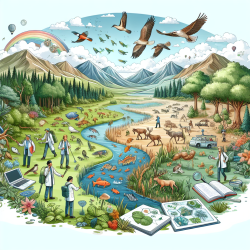Introduction
In the evolving field of bioassessment, the integration of open science principles presents a transformative opportunity for practitioners. The research article "The importance of open science for biological assessment of aquatic environments" by Beck et al. (2020) provides a comprehensive review of how open science can enhance bioassessment processes, making them more transparent, reproducible, and impactful.
Understanding Open Science
Open science is a paradigm that promotes the accessibility, transparency, and reproducibility of scientific research. It emphasizes the sharing of data, methodologies, and findings to foster collaboration and innovation. This approach is particularly relevant in bioassessment, where the need for accurate, reliable, and actionable data is paramount for environmental management.
Applying Open Science in Bioassessment
For practitioners in the field of bioassessment, adopting open science principles can lead to several benefits:
- Data Sharing and Accessibility: Open science encourages the sharing of data across platforms, enabling practitioners to access a wider range of datasets for comprehensive analysis.
- Reproducibility: By documenting methodologies and making data publicly available, bioassessment studies can be replicated and verified, enhancing the credibility of findings.
- Collaboration: Open science fosters collaboration between researchers, environmental managers, and policymakers, facilitating the development of integrated solutions for aquatic ecosystem management.
Case Study: California's Bioassessment Program
The state of California provides a practical example of how open science principles can be effectively implemented in bioassessment. By adopting data stewardship practices and engaging stakeholders through multimedia applications, California has successfully integrated open science into its environmental management strategies.
Overcoming Challenges
While the benefits of open science are clear, practitioners may face challenges in its adoption. These include technical, sociocultural, and institutional barriers. To overcome these hurdles, it is essential to:
- Invest in training and education to build technical skills.
- Foster a culture of openness and collaboration within research and management communities.
- Develop institutional policies that support open data sharing and transparency.
Conclusion
By embracing open science principles, practitioners in the field of bioassessment can enhance the quality and impact of their work. This approach not only improves the reliability of bioassessment products but also ensures that they are accessible and useful to the broader environmental management community.
To read the original research paper, please follow this link: The importance of open science for biological assessment of aquatic environments.










